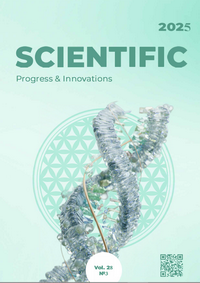Raising the quality and effectiveness of lifetime quantitative helminthic and larvoscopy examination of small ruminants for the presence of lung nematodoses
DOI:
https://doi.org/10.31210/spi2025.28.03.30Keywords:
small ruminants, lung strongylidoses, the method of quantitative helminthic and larvoscopy examination, improvementAbstract
Lung strongylidoses of small ruminants are parasitic diseases caused by the pathogens of numerous nematodes’ genera. The representatives of Protostrongylidae (Protostrongylus kochi та Protostrongylus hobmaieri), Dictiocaulidae (Dictyocaulus filaria and Dictyocaulus viviparus) and Metastrongylidae (Muellerius capillaris and Cystocaulus nigrescens) families became the most wide spread on the territory of Ukraine. The pathogens of these nematodes can parasitize in the lungs, trachea, and bronchi as well as in the tiniest bronchi bifurcations and also in the alveoli and alveolar ducts. As a result of parasitizing in animals’ respiratory organs, the pathogens cause the characteristic clinical picture, lead to productivity decrease, and sometimes to high invasion intensity, even to death. Taking into account the parasites’ location, diagnostics of these diseases has certain difficulties therefore the development of effective methods to reveal the causal agents of lung strongylidoses in small ruminants is a topical direction of the work. The purpose of the paper consisted of increasing the diagnostic effectiveness of the authors’ developments directed at conducting helminthic and larvoscopy examinations in small ruminants with the aim of revealing lung strongylidoses by the developments’ improvement and standardization of the conducted successive actions and orders of performance. In the process of improvement, the following things were proposed: the unit for individual feces sampling in small ruminants describing the unit’s technical characteristics and the method of conducting the sampling; the device for abstracting over-settling liquid and re-suspending the settling with helminthes ’larvae describing the device’s technical characteristics and the sequence of actions while its use; the counting chamber for helminthic and larvoscopy examinations with the description of its technical characteristics and the instruction for the use; step-by-step instruction as to conducting quantitative helminthic and larvoscopy examination of animals to reveal lung nematodoses. The material presented in the article has an important theoretical and practical significance not only for scholars, but also for practicing veterinary doctors. The use of the presented step-by-step instruction and the proposed equipment enables to increase the diagnostic effectiveness of the applied equipment and decrease time spent for conducting one diagnostic examination.
Downloads
Published
How to Cite
Issue
Section
License
Copyright (c) 2025 Scientific Progress & Innovations

This work is licensed under a Creative Commons Attribution 4.0 International License.

 Creative Commons Attribution 4.0 International Licens
Creative Commons Attribution 4.0 International Licens